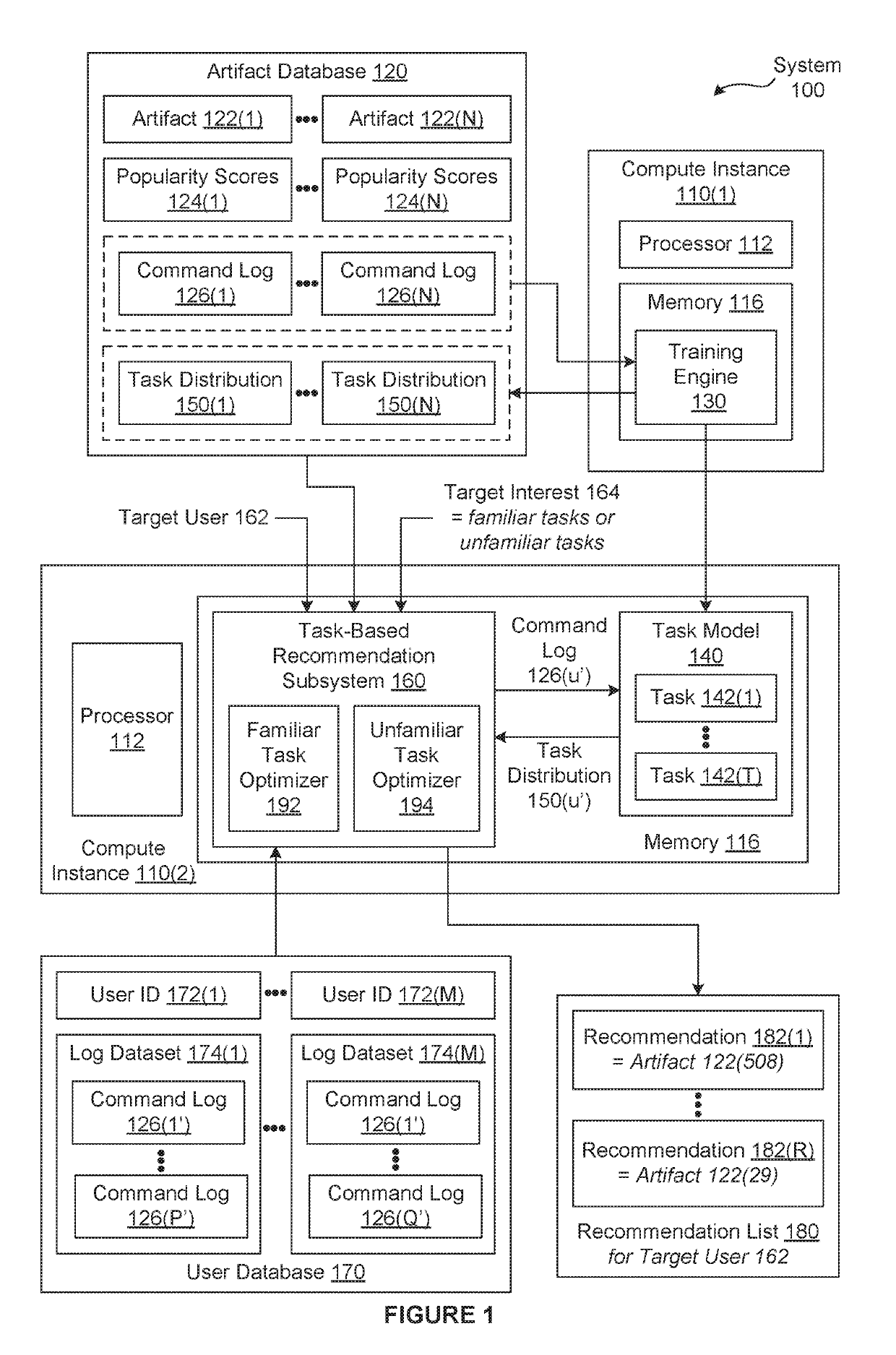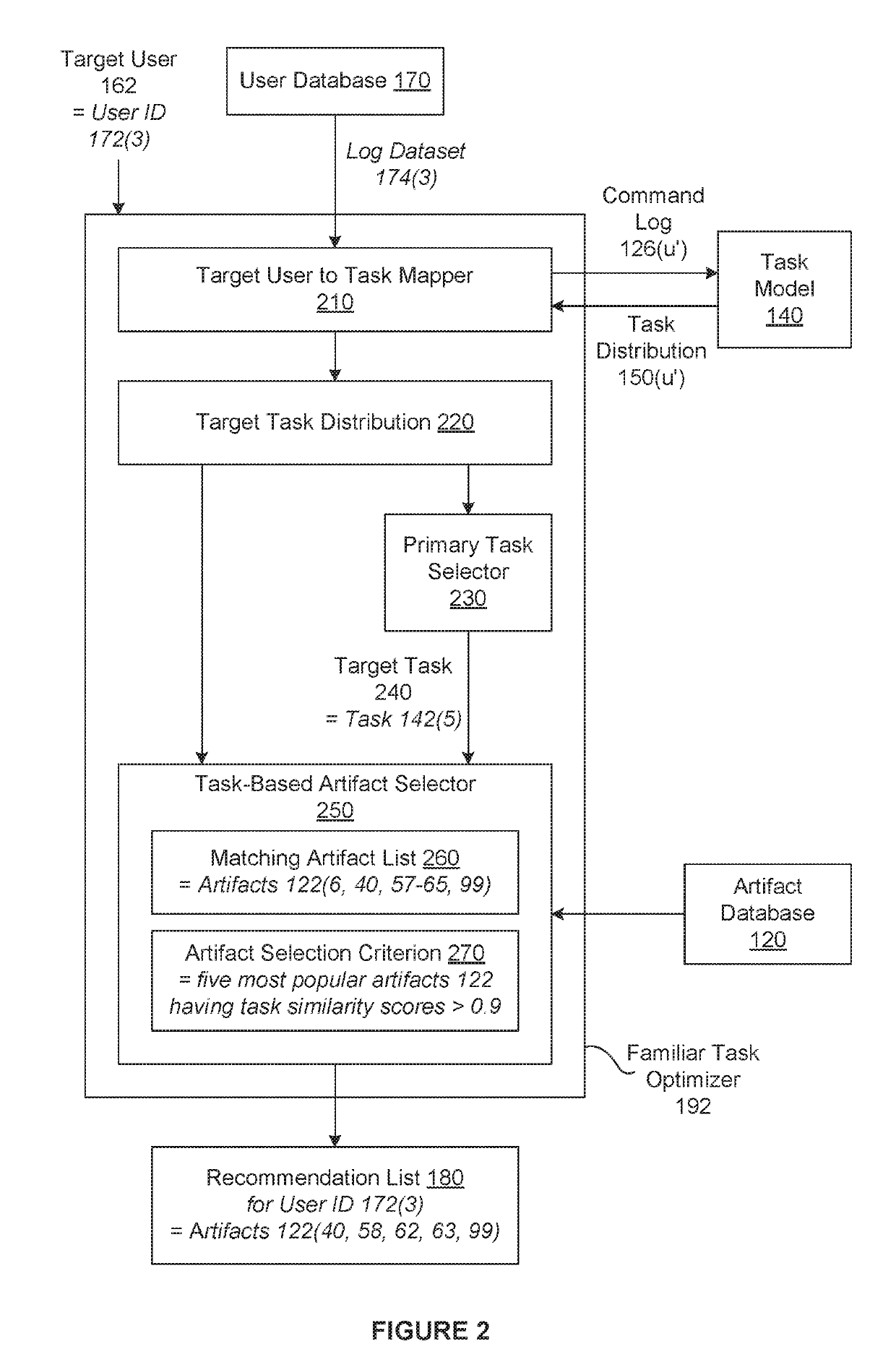Techniques for classifying and recommending software workflows
a technology of software workflow and recommendation, applied in the field of computer-aided design, can solve the problems of manual optimization of a workflow, difficulty, if not impossible, for users, and the recommendation commands are not necessarily applicable to tasks performed by the target user, so as to increase the likelihood of relevance and efficiently automate tasks
- Summary
- Abstract
- Description
- Claims
- Application Information
AI Technical Summary
Benefits of technology
Problems solved by technology
Method used
Image
Examples
Embodiment Construction
[0002]Embodiments of the present invention relate generally to computer-aided design and, more specifically, to techniques for classifying and recommending software workflows.
Description of the Related Art
[0003]In a typical approach to using software for performing various tasks, a user manually develops a sequence of commands known as a “workflow” based on the understanding the user has of one or more software applications. Oftentimes, there are hundreds or even thousands of different commands that are supported by each software application. Furthermore, the commands supported by each software application may change over time. Consequently, manually optimizing a workflow can be difficult, if not impossible, for the user. As a result, the user may execute a particular workflow to perform a given task when other, more efficient, workflows for performing that same task are available.
[0004]For example, a user could establish a primarily manual workflow for generating support structures...
PUM
 Login to View More
Login to View More Abstract
Description
Claims
Application Information
 Login to View More
Login to View More - R&D
- Intellectual Property
- Life Sciences
- Materials
- Tech Scout
- Unparalleled Data Quality
- Higher Quality Content
- 60% Fewer Hallucinations
Browse by: Latest US Patents, China's latest patents, Technical Efficacy Thesaurus, Application Domain, Technology Topic, Popular Technical Reports.
© 2025 PatSnap. All rights reserved.Legal|Privacy policy|Modern Slavery Act Transparency Statement|Sitemap|About US| Contact US: help@patsnap.com



